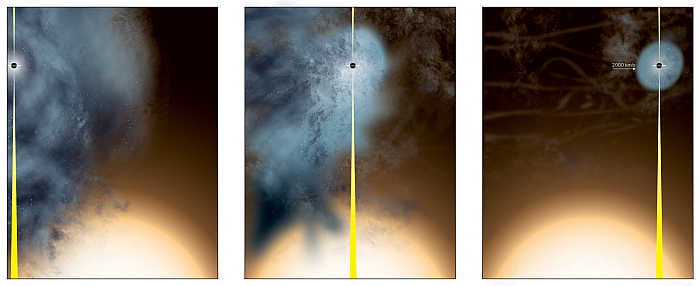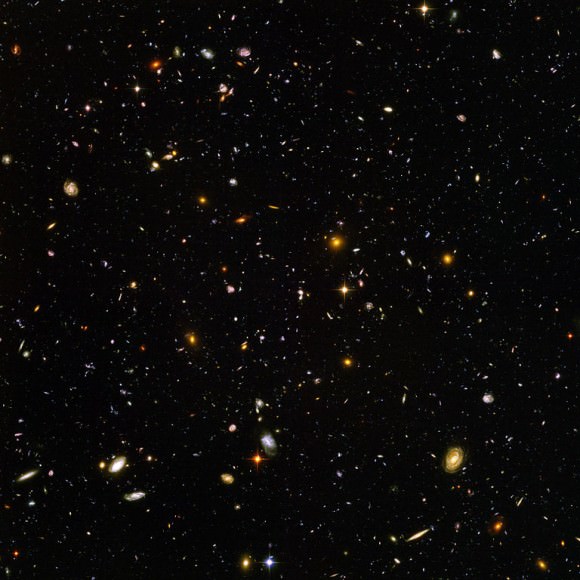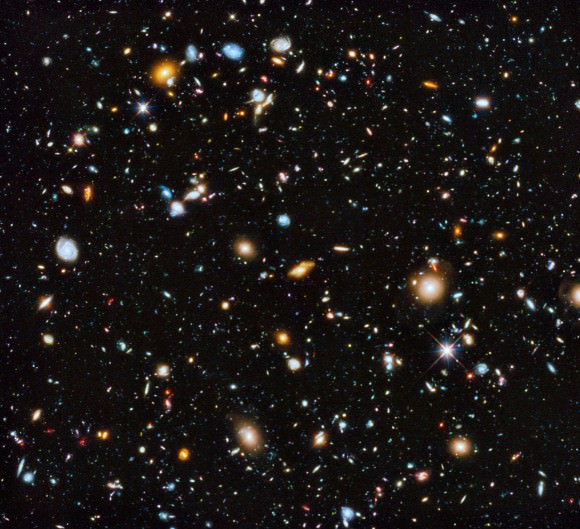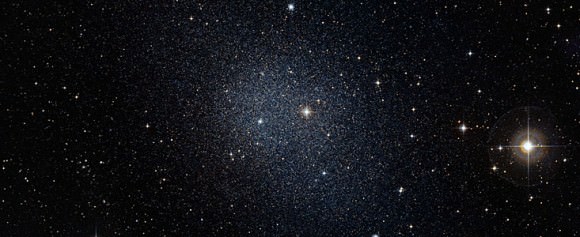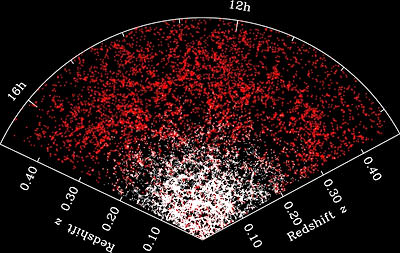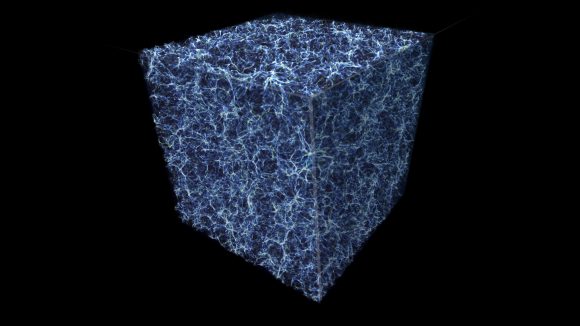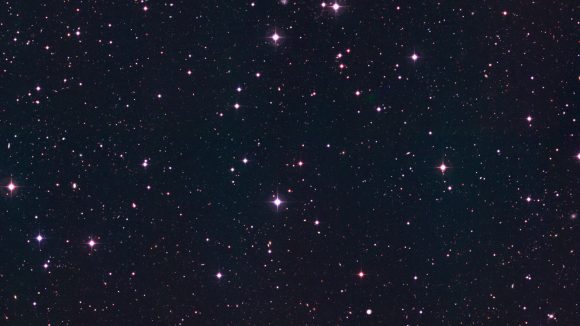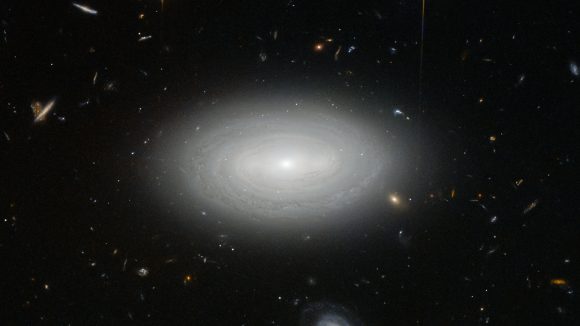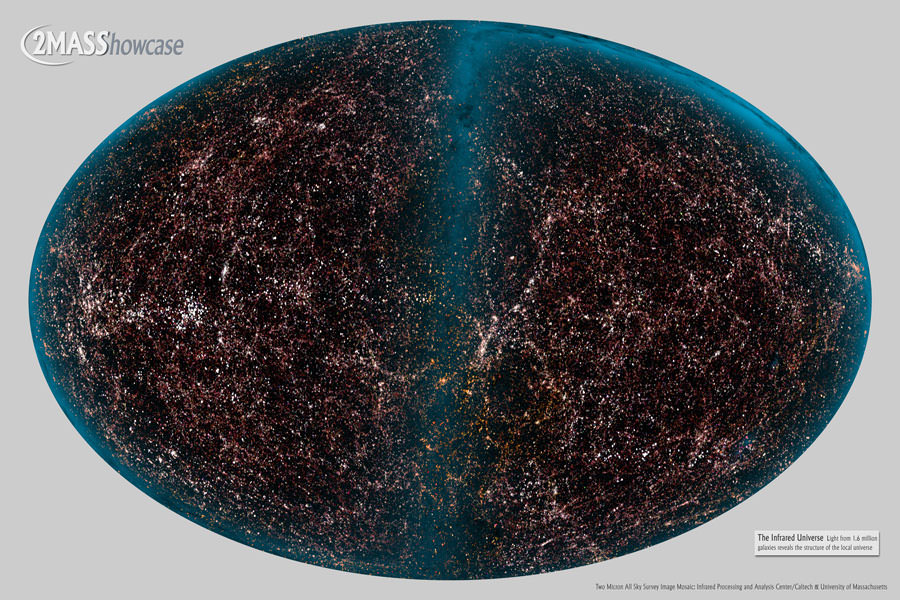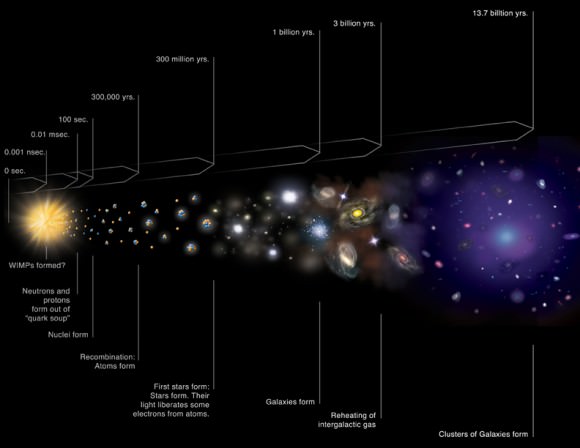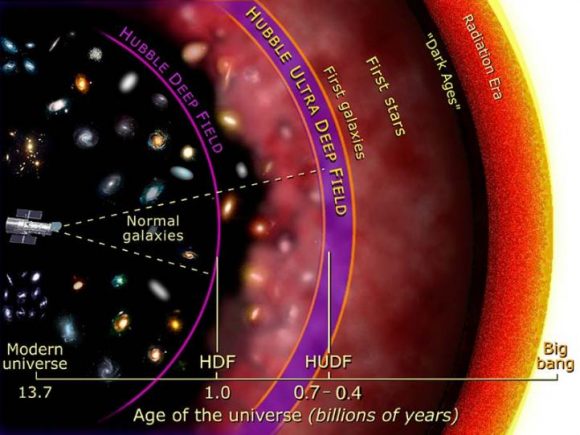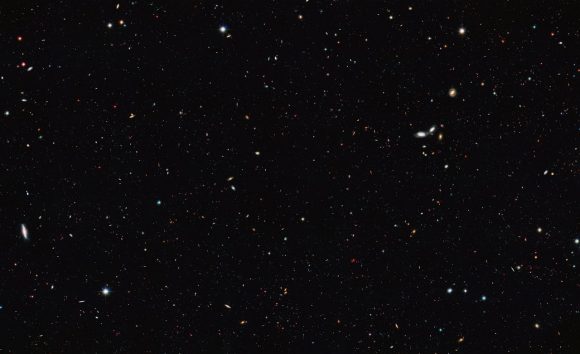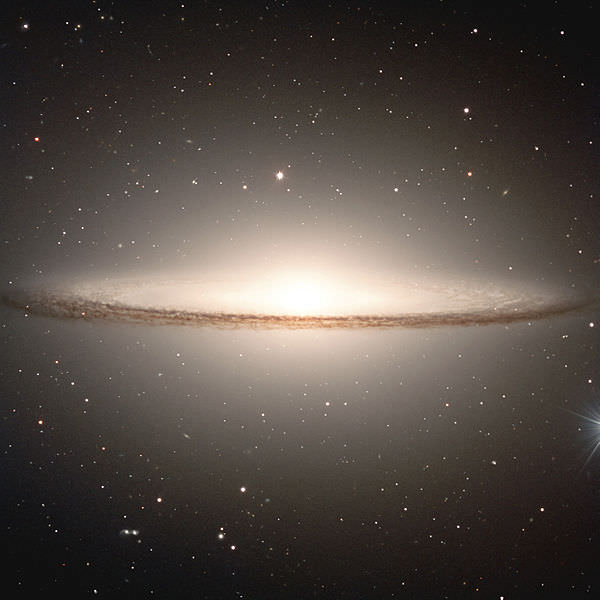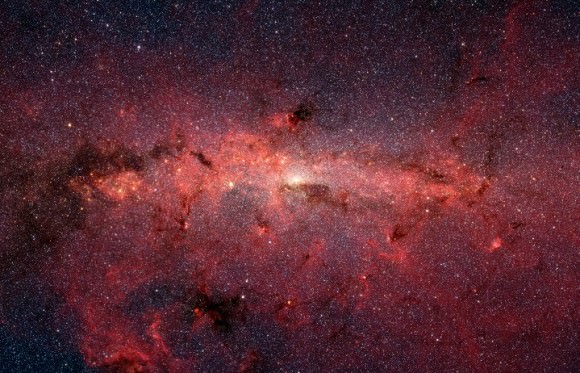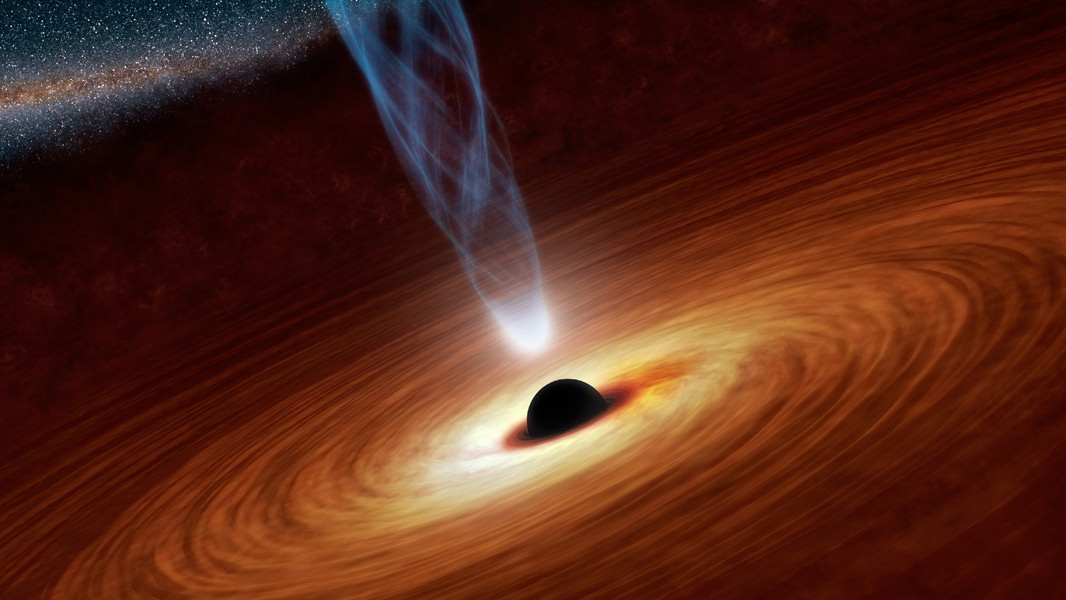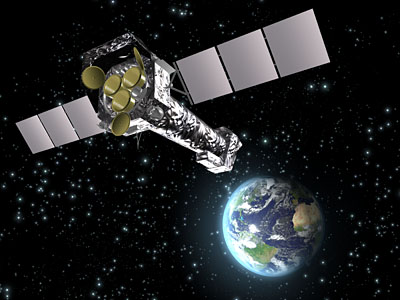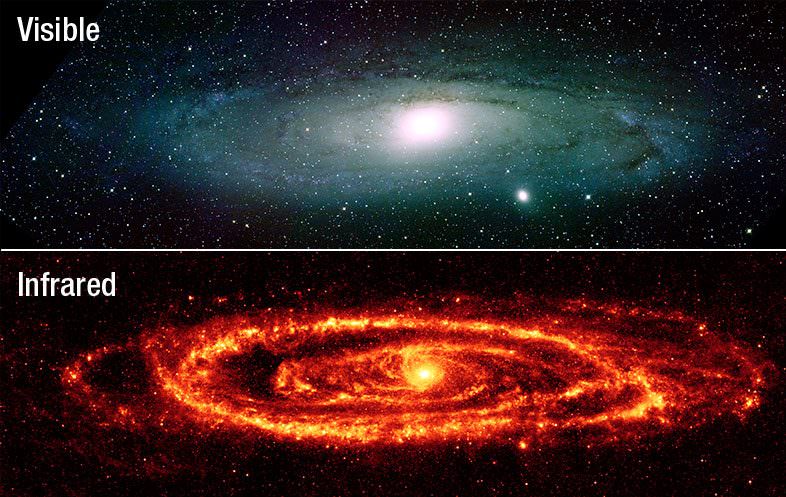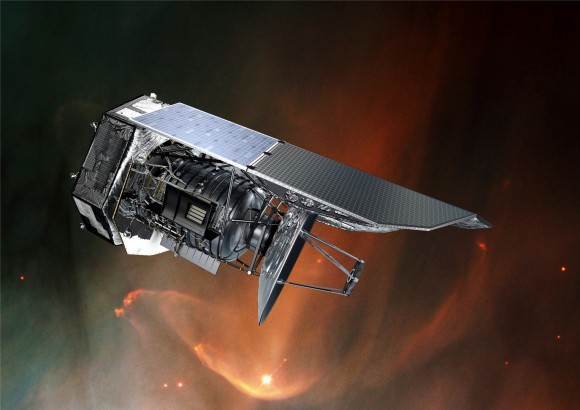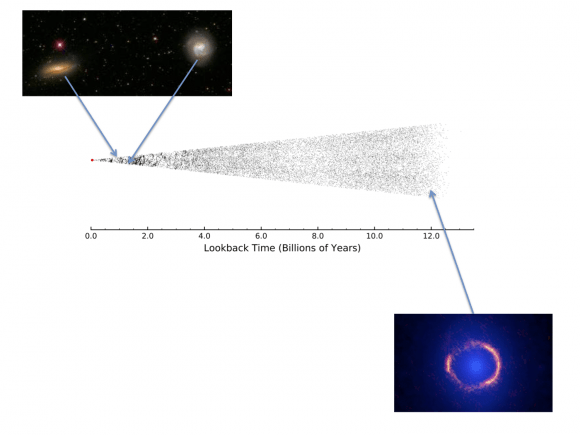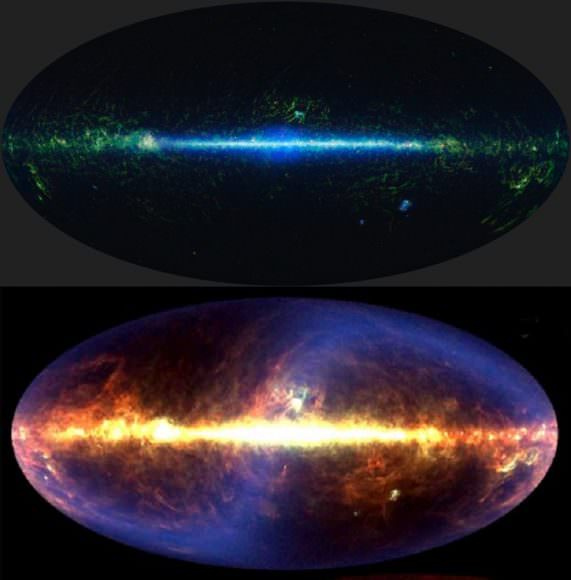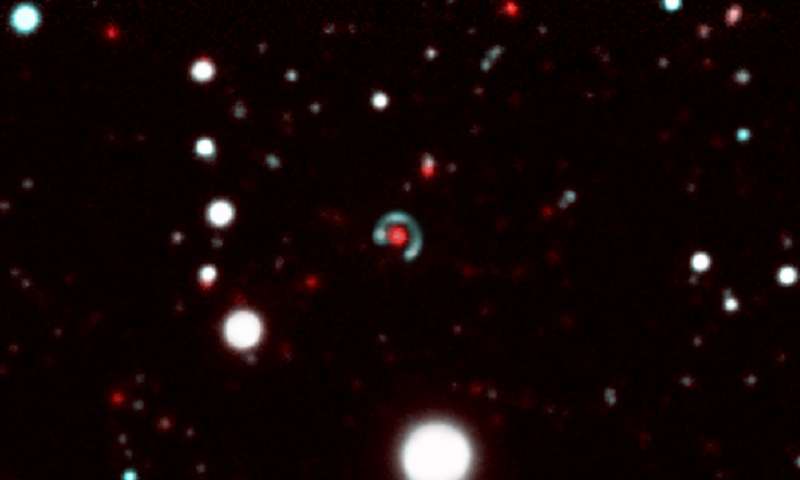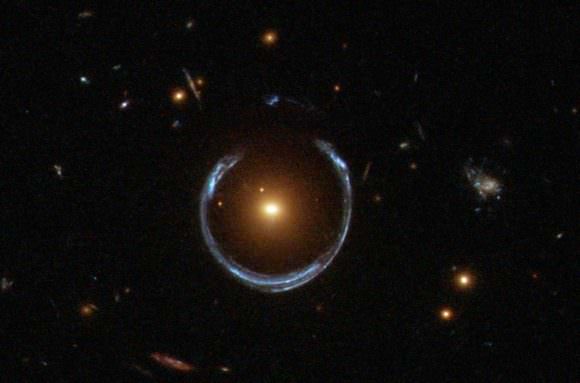Scientists have known for some time that the Milky Way Galaxy is not alone in the Universe. In addition to our galaxy being part of the Local Group – a collection of 54 galaxies and dwarf galaxies – we are also part of the larger formation known as the Virgo Supercluster. So you could say the Milky Way has a lot of neighbors.
Of these, most people consider the Andromeda Galaxy to be our closest galactic cohabitant. But in truth, Andromeda is the closest spiral galaxy, and not the closest galaxy by a long shot. This distinction falls to a formation that is actually within the Milky Way itself, a dwarf galaxy that we’ve only known about for a little over a decade.
Closest Galaxy:
At present, the closet known galaxy to the Milky Way is the Canis Major Dwarf Galaxy – aka. the Canis Major Overdensity. This stellar formation is about 42,000 light years from the galactic center, and a mere 25,000 light years from our Solar System. This puts it closer to us than the center of our own galaxy, which is 30,000 light years away from the Solar System.
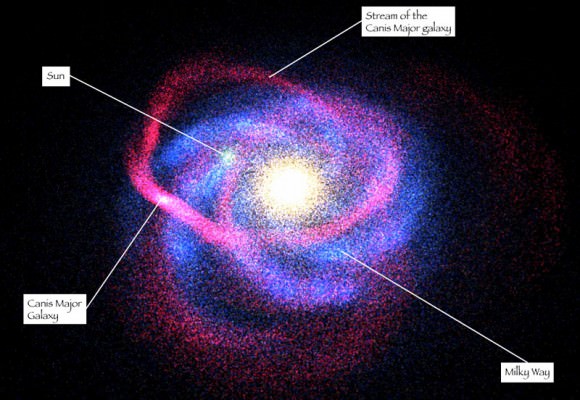
Characteristics:
The Canis Major Dwarf Galaxy Dwarf Galaxy is believed to contain one billion stars in all, a relatively high-percentage of which are in the Red Giant Branch phase of their lifetimes. It has a roughly elliptical shape and is thought to contain as many stars as the Sagittarius Dwarf Elliptical Galaxy, the previous contender for closest galaxy to our location in the Milky Way.
In addition to the dwarf galaxy itself, a long filament of stars is visible trailing behind it. This complex, ringlike structure – which is sometimes referred to as the Monoceros Ring – wraps around the galaxy three times. The stream was first discovered in the early 21st century by astronomers conducting the Sloan Digital Sky Survey (SDSS).
It was in the course of investigating this ring of stars, and a closely spaced group of globular clusters similar to those associated with the Sagittarius Dwarf Elliptical Galaxy, that the Canis Major Dwarf Galaxy was first discovered. The current theory is that this galaxy was accreted (or swallowed up) by the Milky Way Galaxy.
Other globular clusters that orbit the center of our Milky Way as a satellite – i.e. NGC 1851, NGC 1904, NGC 2298 and NGC 2808 – are thought to have been part of the Canis Major Dwarf Galaxy before its accretion. It also has associated open clusters, which are thought to have formed as a result of the dwarf galaxy’s gravity perturbing material in the galactic disk and stimulating star formation.
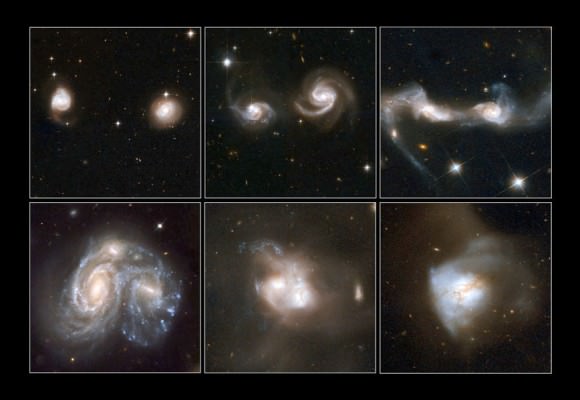
Discovery:
Prior to its discovery, astronomers believed that the Sagittarius Dwarf Galaxy was the closest galactic formation to our own. At 70,000 light years from Earth, this galaxy was determined in 1994 to be closer to us than the Large Magellanic Cloud (LMC), the irregular dwarf galaxy that is located 180,000 light years from Earth, and which previously held the title of the closest galaxy to the Milky Way.
All of that changed in 2003 when The Canis Major Dwarf Galaxy was discovered by the Two Micron All-Sky Survey (2MASS). This collaborative astronomical mission, which took place between 1997 and 2001, relied on data obtained by the Mt. Hopkins Observatory in Arizona (for the Northern Hemisphere) and the Cerro Tololo Inter-American Observatory in Chile (for the southern hemisphere).
From this data, astronomers were able to conduct a survey of 70% of the sky, detecting about 5,700 celestial sources of infrared radiation. Infrared astronomy takes advantage of advances in astronomy that see more of the Universe, since infrared light is not blocked by gas and dust to the same extent as visible light.
Because of this technique, the astronomers were able to detect a very significant over-density of class M giant stars in a part of the sky occupied by the Canis Major constellation, along with several other related structures composed of this type of star, two of which form broad, faint arcs (as seen in the image close to the top).
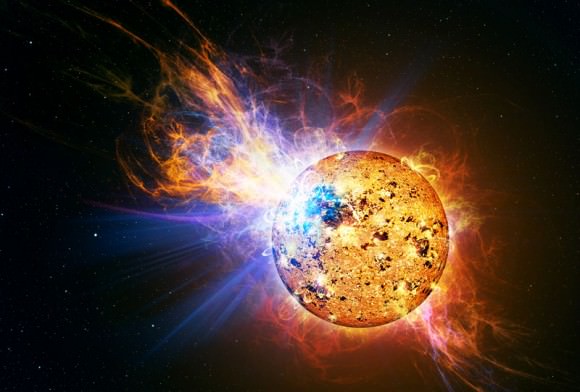
The prevalence of M-class stars is what made the formation easy to detect. These cool, “Red Dwarfs” are not very luminous compared to other classes of stars, and cannot even be seen with the naked eye. However, they shine very brightly in the infrared, and appeared in great numbers.
The discovery of this galaxy, and subsequent analysis of the stars associated with it, has provided some support for the current theory that galaxies may grow in size by swallowing their smaller neighbors. The Milky Way became the size it is now by eating up other galaxies like Canis Major, and it continues to do so today. And since stars from the Canis Major Dwarf Galaxy are technically already part of the Milky Way, it is by definition the nearest galaxy to us.
As already noted, it was the Sagittarius Dwarf Elliptical Galaxy that held the position of closest galaxy to our own prior to 2003. At 75,000 light years away. This dwarf galaxy, which consists of four globular clusters that measure some 10,000 light-years in diameter, was discovered in 1994. Prior to that, the Large Magellanic Cloud was thought to be our closest neighbor.
The Andromeda Galaxy (M31) is the closest spiral galaxy to us, and though it’s gravitationally bound to the Milky Way, it’s not the closest galaxy by far – being 2 million light years away. Andromeda is currently approaching our galaxy at a speed of about 110 kilometers per second. In roughly 4 billion years, the Andromeda Galaxy is expected to merge with out own, forming a single, super-galaxy.
Future of the Canis Major Dwarf Galaxy:
Astronomers also believe that the Canis Major Dwarf Galaxy is in the process of being pulled apart by the gravitational field of the more massive Milky Way Galaxy. The main body of the galaxy is already extremely degraded, a process which will continue as it travels around and through our Galaxy.
In time, the accretion process will likely culminate with the Canis Major Dwarf Galaxy merging entirely with the Milky Way, thus depositing its 1 billion stars to the 200 t0 400 billion that are already part of our galaxy.
We have written many interesting articles on galaxies here at Universe Today. Here’s Closest Galaxy Discovered, How did the Milky Way Form?, How Many Galaxies are there in the Universe?, What is the Milky Way Collision, Spiral Galaxies Could eat Dwarfs all over the Universe and The Canis Major Constellation.
For more information, check out this article from the Spitzer Space Telescope‘s website about the galaxies that are closest to the Milky Way Galaxy. And here is a video by the same author on the subject.
Astronomy Cast has some interesting episodes on the subject. Here’s Episode 97: Galaxies and Episode 99: The Milky Way.
Sources:


